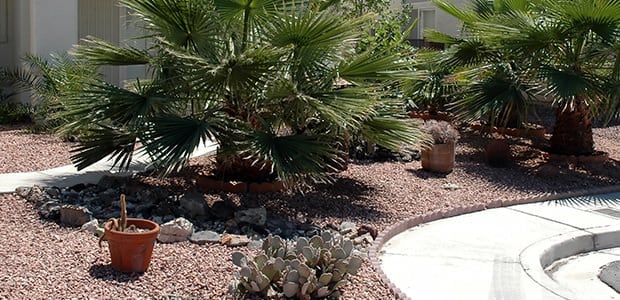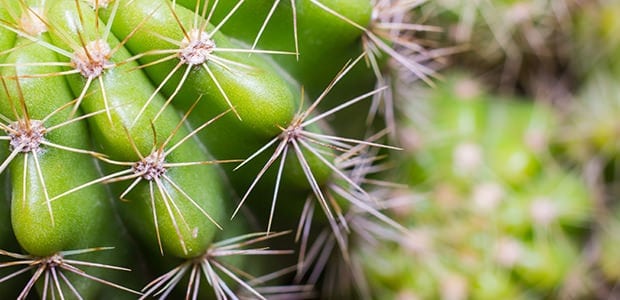SOMETHING TO CONSIDER
The average 15’x15’ Bermuda grass lawn uses over 5000 gallons of water per year. A properly xeriscaped yard, using native plants, can be maintained with little or no supplemental water.
After the hot, summer months pass and the temperatures start to cool down, irrigation controllers need to be adjusted accordingly. Many factors determine the amount of water required by trees, shrubs and grass from October through March.
The following tips will help to create a watering schedule for fall and winter in Southern Arizona:
– Newly planted trees and shrubs will need more frequent watering until they are established. As a rule of thumb, plants are considered established when they survive the first summer season after planting.
– Watering at night or early in the morning are the most effective times to water, because wind and evaporation are lower. High wind speeds distort sprinkler patterns and produce non-uniform irrigation.
– A good test to determine if the ground is dry is to push a 6” screwdriver or soil probe into the ground. If it goes in easily and the soil feels moist, it is likely that watering is not necessary.
– When irrigating, it is important that the water goes deep enough to wet the entire root zone. When 50% of the water evaporates from the root zone, it is time to water again. This is based on evapotranspiration (ET) rates. The average ET rate in July is 10.5, when plants are being watered an average of 3-4 times per WEEK. The average ET rate in December is 2.1, which means that plants should be getting water an average of 3-4 times per MONTH.
For more information on watering schedules and a complete landscape watering guide, visit http://www.wateruseitwisely.com/region/arizona/100-ways-to-conserve/outdoor-tips/landscape-watering-guide.php







